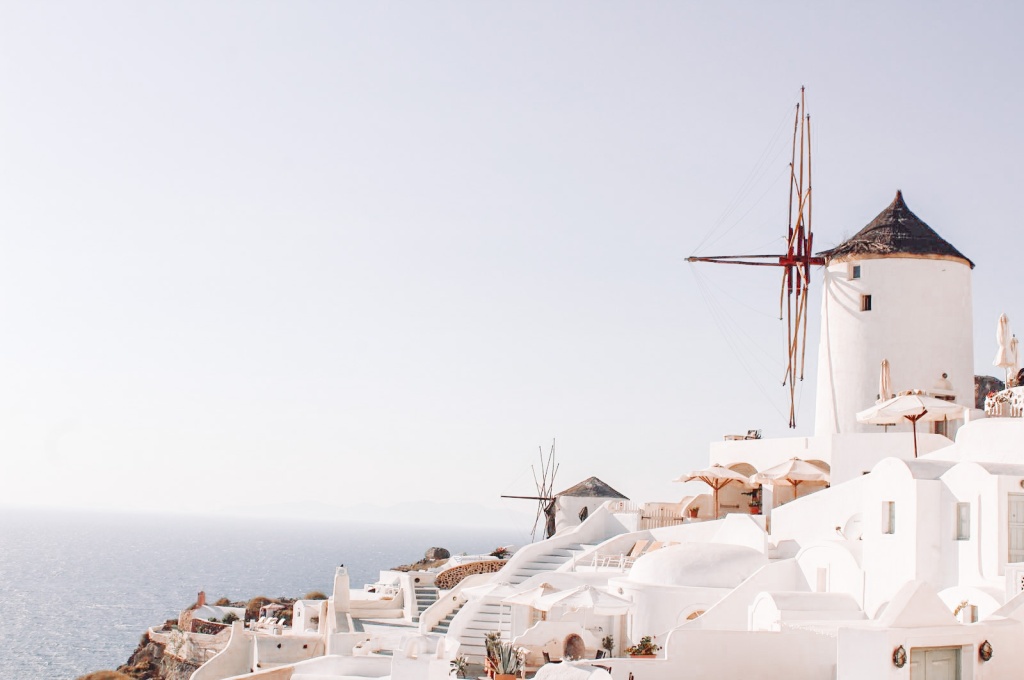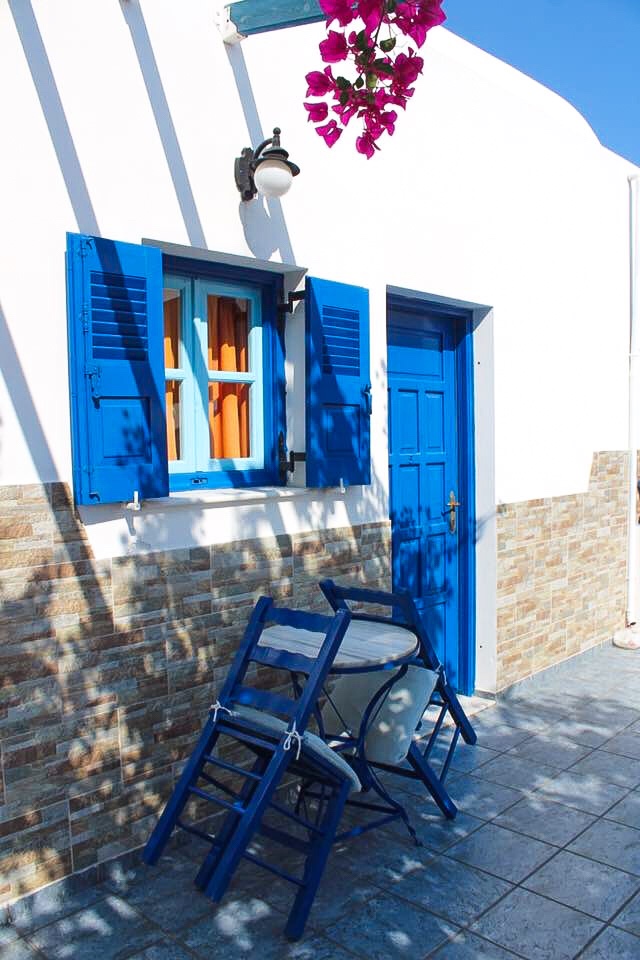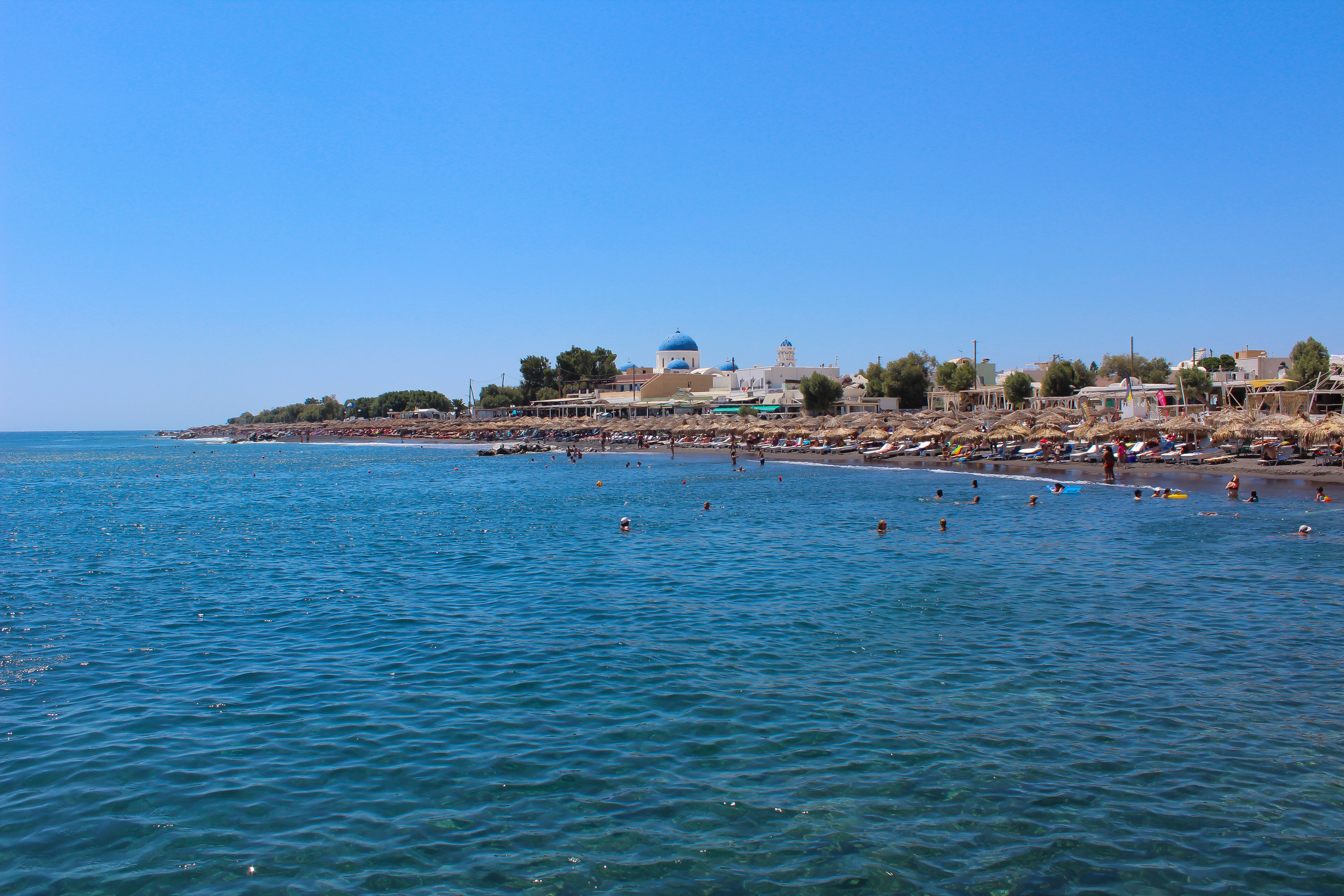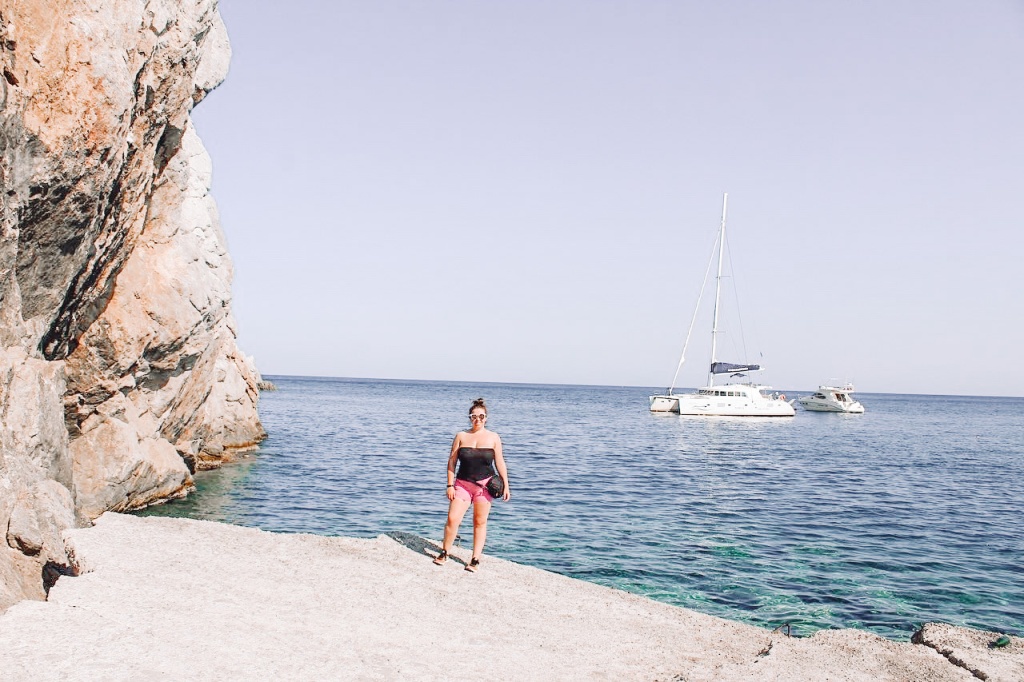When you think of Greece, you’re probably thinking of Santorini. Multi-coloured cliffs that soar 300 metres above sea level, white-washed Cycladic houses with azure blue-domed roofs clinging to the cliffside and donkeys ferrying slothful tourists back and forth.

Santorini sits in the middle of the sapphire Aegean Sea, halfway between Athens and Crete. The island spoons the vast crater left by one of the largest volcanic events in history. The Minoan eruption was a major catastrophic volcanic eruption and devastated the once circular island of Strongili (Round One) 3,500 years ago. The colossal eruptions caused the centre of Strongili to sink, and the sea rushed to fill it, leaving the east caldera that we today know as Santorini.
Perched on the northernmost tip of the island is the village of Oia, pronounced EE – AH. Built on a steep slope of the caldera, the village’s whitewashed lodgings nestle into the volcanic rock and reflect the renaissance of Santorini. Although most parts of the town are only accessible via foot, Oia still draws enormous crowds and at sunset is a magnet for tourists from across the island. Witnessing the spectacle that is the Santorini Sunset is unavoidable. The beauty of the setting sun painting the sky, the colours bouncing off of the whitewashed dwellings, producing a palette in variant shades simply cannot be missed.


Santorini’s main town and modern capital, Fira, is a vibrant place. Fira derives its name from an alternative pronunciation of ‘Thira’, the ancient name for the island itself. Built on the western edge of the caldera, Fira is a maze of narrow, cobbled streets full of shops, bars and restaurants. The town offers views over the multi-coloured cliffs and out to the volcano, and at night the caldera edge is a multitude of frozen fairy lights.



If you head down the 600 stone steps from Fira, you’ll reach Ormos, the old port. The small, typical harbour has restaurants, tavernas and a handful of shops. Alternatively, if you do not fancy the climb, you can traverse the 600 steps via donkey or take the island’s only cable car.
The coastal hike between Fira and Oia was a highlight of my time on the Greek island. Taking you along the Caldera edge, through the villages of Fira, Firostefani, Imerovigli and Oia, the hike typically takes between two and four hours however will depend on your physical capability and, how many stops you make – it took me around three hours. The trail itself is just 11 kilometres (6.8 miles) and varies from footpath to cobblestones to dirt tracks. Some sections of the trail are signposted, yet others are not; therefore I suggest following the crowd to stay on track. In the peak of summer, the temperature is uncomfortably hot by 11:00 so setting off in the early morning or late afternoon to avoid the midday sun. I chose to set off late afternoon from Fira. This meant I finished my hike in Oia just in time to watch the sunset, the icing of top of a wonderful cake!
Note: Take enough water to last you the duration and be sure to take your camera as there are endless photo opportunities!





However, Santorini is not just about its caldera edge. The island slopes down to sea level on its eastern and southern sides, with volcanic beaches in the popular resorts of Perissa and Kamari.
Perissa is a seaside village on the south-east coast of the island and is where I based myself. I chose this resort as it is much less crowded and more affordable than the villages on the north side of the island. After much research, I discovered a quaint property set only 300m back from the beach and 200m from the resort centre. The comfortable yet straightforward property was perfect.



The main blue flag beach is the long stretch at Perissa. The beach road is closed daily for pedestrians between 17:00 – 05:00 from May to October, allowing tourists to stroll the beachfront promenade undisturbed by the many mopeds that buzz past during the day. It is easy to rent a scooter or ATV for yourself in Perissa – my friend and I did this one day and spent our day exploring the island; this spontaneous decision turned out to be one of our most memorable days.
For great Gyros, a Greek staple and a must-try for any foodie when in Greece, drop into Pepito’s along Perissa Beach. My friend and I ate here almost daily; not only were the staff welcoming and the food delicious but the costs friendly to my wallet.
Kamari is another seaside village on the southeast side of the island; however, the beach here is more shingle than black sand. The town has a wide choice of taverns, bars and clubs as well as an outdoor cinema. Approximately a 20-minute walk from Kamari Beach, each night at 21:30 the charming cinema opens its doors to tourists and locals. The movie changes every few days, information of which can be found locally or via the cinema’s website: http://www.cinekamari.gr/. Before wandering to the cinema to watch none other than Mama Mia, we ate at ‘To Pinakio’ after reading some overwhelmingly great reviews on TripAdvisor. Our meal did not disappoint; we sampled some authentic Greek meze, all of which was simply mouth-watering. Because of the restaurant’s popularity – booking is essential.
The mountain that sits between the towns of Perissa and Kamari – Mount Voluno is home to Ancient Thira. Ancient Thira is an old city on the ridge of Mount Voluno. Named after the mythical ruler of the island, Theras, it consists of Hellenistic, Roman and Byzantine ruins.
Although not signposted well, it is worth the one hour hike up the dusty ‘path’ from Perissa (appropriate footwear is a must.) The summit offers rewarding views across both Perissa and Kamari.



Other notable sights on and around the island of Santorini are the square Akrotiri Lighthouse, one of the oldest lighthouses in Greece, constructed in 1892 it sits on the islands southern peninsula.
Red beach, named for its blood-red sand and gently crumbling burnt-umber cliffs, is located in the village of Akrotiri and is the most scenic and interesting beach on the island. Akrotiri, the spectacularly well-preserved remains of the Minoan Bronze Age settlement that was destroyed in the Theran eruption and buried in volcanic ash 3,500 years ago. The most famous Minoan site outside of Crete, the buildings are spookily intact.
Santorini Hot Springs, located on the tiny, uninhabited islet of Palia Kameni was formed by ongoing volcanic activity deep underground. The orange streaked pool reaches temperatures of between 30–35°c and contains sulphur which has healing and softening properties for the skin.
For more information on where I stayed in Perissa, click here.

What a great text and pictures! You do such an amazing job writing! Keep telling us your stories and adventures!
LikeLiked by 1 person
Beautiful photos, they certainly brighten up a dull and dreary day in the UK.
LikeLiked by 1 person